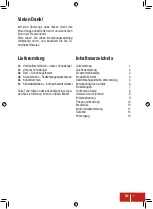
NOTE: Units equipped with speed regulators
If the outside temperature is below -10°C and the unit has
been switched off for more than 4 hours, it is necessary to
wait two hours after the unit has been switched on again to
allow the variable drive to warm up.
7.2 -
Minimum heat transfer fluid flow rate
(units without factory-fitted hydronic module)
The minimum heat transfer fluid flow rate is given in the
paragraph "water exchanger minimum water volume and flow
rate".
If the system flow is less than the unit's minimum flow, the
exchanger flow can be recirculated, as shown in the diagram.
For a minimum heat-transfer fluid flow rate
2
1
B
Water-cooled heat exchanger
C
Recirculation
If the system flow rate is less than the minimum flow rate, there
may be a high risk of fouling.
7.3 -
Maximum heat transfer fluid flow rate
(without factory-fitted hydronic module)
The maximum heat transfer fluid flow rate is given in the
paragraph "water exchanger minimum water volume and flow
rate". If the system's flow exceeds the unit's maximum value, it
can be bypassed as shown in the diagram.
For a maximum heat-transfer fluid flow rate
2
1
B
Water-cooled heat exchanger
C
Recirculation
It is limited by the allowable pressure drop for the water
exchanger.
Furthermore, it must ensure a minimum ΔT in the water
exchanger of 2.8 K, which corresponds to a flow rate of 0.09 l/s
per kW.
7.4 -
Variable flow evaporator (units without
factory-fitted hydronic module)
A variable water heat exchanger flow can be used in standard
units. The flow rate must be higher than the minimum flow given
in the table of permissible flow rates and must not vary by more
than 10% per minute.
If the flow rate changes more rapidly, the system should contain
a minimum of 6.5 litres of water per kW instead of 2.5 l/kW.
7 - APPLICATION DATA
AQUACIAT
POWER
ILD
EN-28
















































